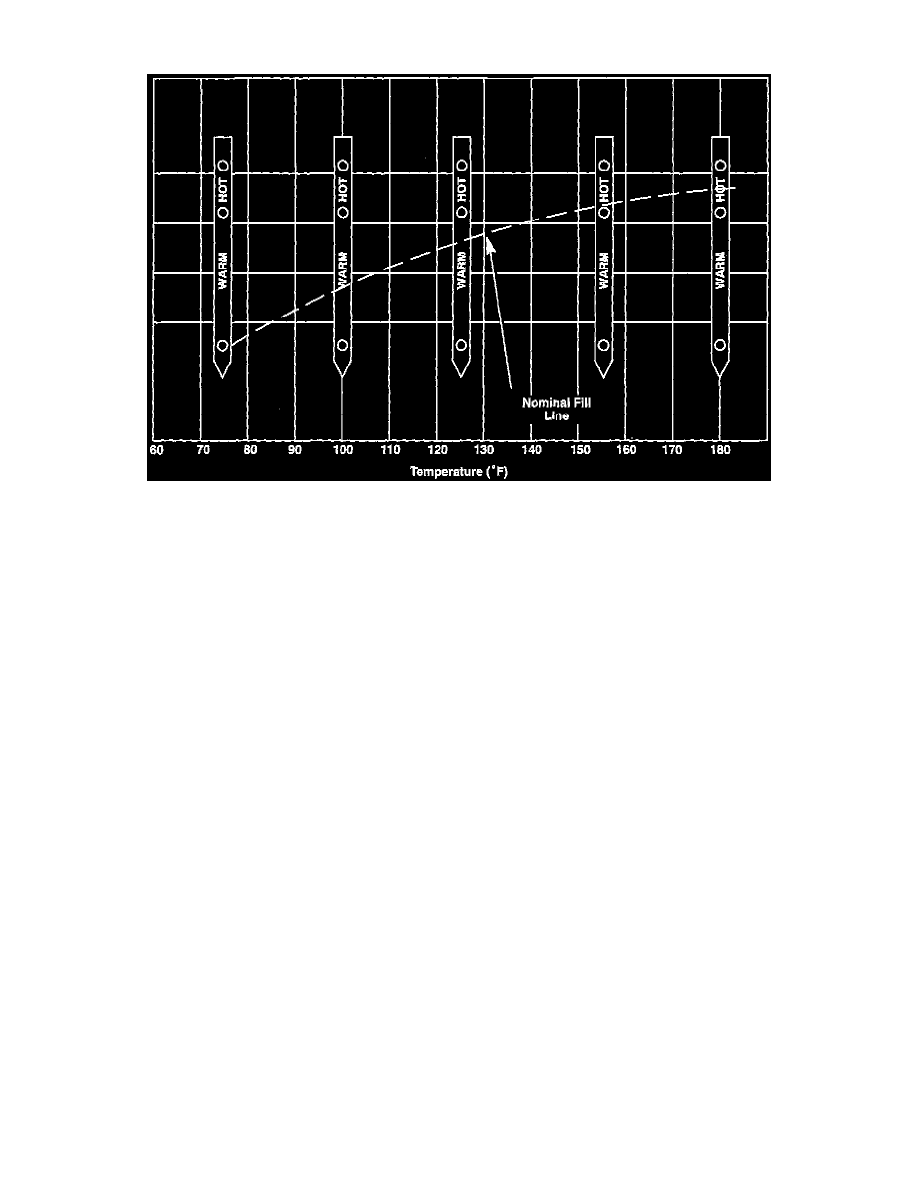Concorde V6-2.7L VIN R (1998)

Fluid Pan: Description and Operation
NOTE: The transmission and differential have separate oil sumps. The transmission sump requires automatic transmission fluid. The differential sump
requires petroleum based hypoid gear lube.
The transmission sump has a dipstick to check oil similar to most automatic transmissions. It is located on the left side of the engine. Be sure to wipe all
dirt from the dipstick handle before removing.
The torque converter fills in both the Park (P) and Neutral (N) positions. Place the selector lever in Park to be sure that the fluid level check is accurate.
The engine should be running at idle speed for at least one minute, with the vehicle on level ground. At normal operating temperature (approximately 82°
C or 180°F.), the fluid level is correct if it is in the HOT region (cross-hatched area) on the oil level indicator. The fluid level will be approximately
one-quarter inch above the lower hole of the dipstick at 70°F fluid temperature.
NOTE: Engine and transaxle should be at normal operating temperature before performing this procedure.
1. Start engine and apply parking brake.
2. Hook up DRBIII scan tool and select transmission.
3. Select sensors.
4. Read the transmission temperature value.
5. Compare the fluid temperature value with the chart.
6. Adjust transmission fluid level shown on the dipstick according to the Transmission Fluid Temperature Chart.
7. Check transmission for leaks.
Low fluid level can cause a variety of conditions because it allows the pump to take in air along with the fluid. As in any hydraulic system, air bubbles
make the fluid spongy, therefore, pressures will be low and build up slowly.
Improper filling can also raise the fluid level too high. When the transaxle has too much fluid, the gears churn up foam and cause the same conditions
which occur with a low fluid level.
In either case, air bubbles can cause overheating and/or fluid oxidation, and varnishing. This can interfere with normal valve, clutch and accumulator
operation. Foaming can also result in fluid escaping from the transaxle vent where it may be mistaken for a leak.
Along with fluid level, it is important to check the condition of the fluid. When the fluid smells burned, and is contaminated with metal or friction
material particles, a complete transaxle recondition is needed. Be sure to examine the fluid on the dipstick closely. If there is any doubt, check.
After the fluid has been checked, seat the dipstick fully to seal out water and dirt.
The transmission fluid level should be inspected at least every six months.
